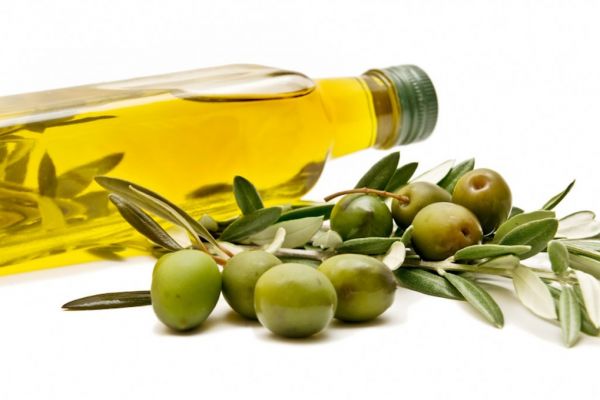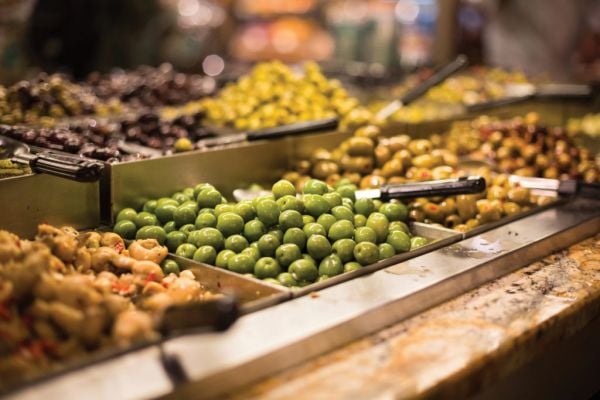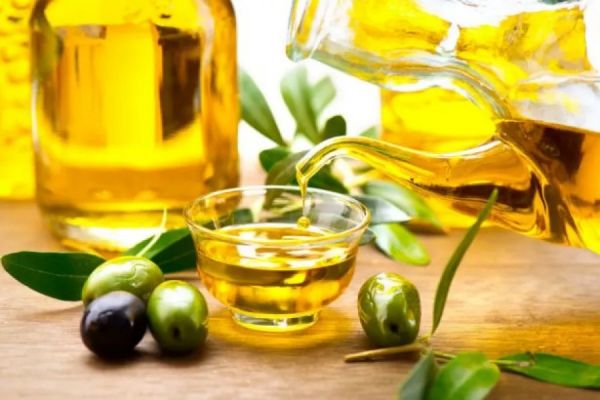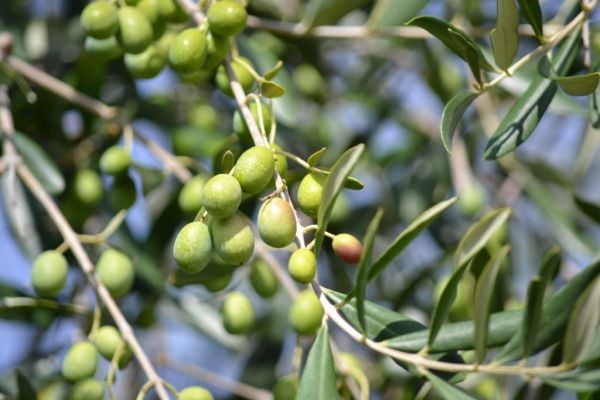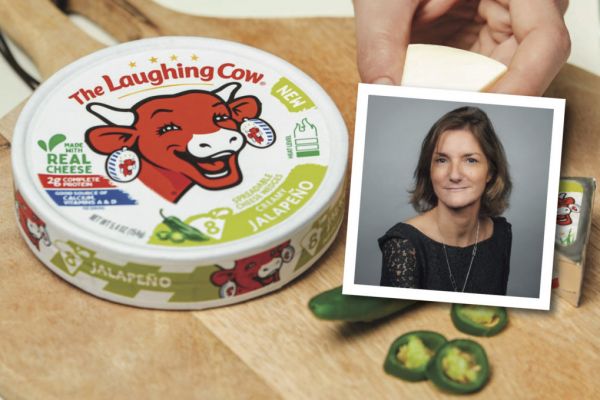Dayeeta Das examines the latest trends in the table olive and olive oil markets. This article first appeared in ESM July/August 2022.
To paraphrase a Harvard study from earlier this year, ‘seven grams of olive oil a day keeps the cardiovascular doctor away’. High olive oil consumption (more than half a tablespoon, or approximately seven grams of oil) has the potential to reduce the risk of cardiovascular disease, cancer, and neurodegenerative diseases, while also contributing to general day-to-day health.
Coupled with a significant shift among consumers towards healthy eating during the pandemic, it's therefore no wonder that the table olive and olive oil sector is primed for growth over the coming years.
Olive Oil Consumption
Global olive oil consumption is estimated to increase to 3.21 million tonnes in the 2021/22 crop year, according to data from the International Olive Council (IOC), which also indicated that global olive oil consumption has exceeded production in the past three years. Olive oil consumption is also increasing beyond the borders of Southern Europe and North Africa, in countries such as China, Japan and India.
Commenting on this trend, IOC executive director Abdellatif Ghedira noted, “It shows how consumption reflects changes in consumer lifestyles. COVID-19 has changed our behaviour, and consumers have shifted to purchasing better-quality products, which has also led to an increase in the value of trade globally.”
In the years to come, consumption in the EU is expected to be driven by non-producer countries, which represented 21% of consumption in 2020 and 32% in 2031, according to the recent European Union agricultural outlook for 2021-31. The dominant channel for olive oil sales is retail, which accounted for around 65% thereof in 2021, with organic olive oil gaining some market share (around 3% in 2021).
In the immediate term, in 2021/22, experts believe that olive oil consumption within the European Union could rise by 7% compared with the previous crop year, partly due to an estimated 3% decrease in exports. In addition, the war in Ukraine has pushed up the price of other vegetable oils and created greater demand for olive oil as an alternative.
Spain and Italy are expected to lead the way in terms of olive oil consumption this year, consuming approximately 510,000 tonnes each – a slight decline from the previous year.
Production Trends
According to EU data, production of olive oil in the EU could reach 2.5 million tonnes by 2031 – up by 22% when compared to 2020. While the growing area is set to remain stable, the planting of more resilient varieties of olive trees is expected to contribute to higher yields.
For the 2021/22 crop year, olive oil production is expected to increase by 10%, year on year, to 2.3 million tonnes. This increase in production will also boost EU exports, which are expected to grow from 35% in 2020 to 44% in 2031, reaching one million tonnes.
On a global level, olive oil production is expected to fall to 2.9 million tonnes in the 2022/23 crop year, equating to an 11% drop, according to estimates from the United States Department of Agriculture. This is based on the anticipation of smaller olive harvests in the European Union, Morocco, Türkiye and Tunisia.
Table Olives
In the coming years, table olive production is set to increase in the EU as a result of positive developments in crop yield, as well as expansion in the growing area, especially in Spain, Italy and Portugal. Production is expected to rise by 1% to 2.5% per year between 2020 and 2031 in these key markets, according to EU data.
The consumption of table olives in Spain is projected to remain around the current level of almost three kilograms per capita by 2031, while increases are projected for Italy, Greece and Portugal. In other EU countries, per-capita consumption is expected to increase to 1.2 kilograms by 2031.
Exports of table olives are estimated to grow in the EU, with Spain, Greece and Portugal seeing an annual growth rate of around 1% to 2%. In Italy, net imports of table olives are expected to decline from 71,600 tonnes in 2020 to around 54,000 tonnes in 2031. Portugal witnessed a structural change in its net-trade position between 2006 and 2021, as it moved from being a net importer to a net exporter. The trend is expected to continue in the coming years, mainly driven by growing demand in Brazil.
The data also shows that the main EU olive-producing countries will maintain their strong trade position, with growing intra-EU trade flows, as well as external trade, including exports to the US. The table olive category is likely to face competition from Egypt, Algeria and Türkiye, which have the advantage of lower labour costs.
The outlook for the short term indicates an output of 896,300 tonnes from producing countries in the EU in the 2021/22 crop year, with Spain producing 645,000 tonnes, followed by Greece, with 165,000 tonnes, according to data from the IOC.
Challenges On The Horizon
The challenges facing the sector include – among others – climate change, which is set to impact yield quality on an annual basis. Although olive trees are drought resilient, they are not immune to the impact of severe weather conditions, which result in lower yields and damage to the trees.
The Italian olive oil sector is among those set to be hit hardest by the challenging weather and market conditions, according to a report from the Istituto di Servizi per il Mercato Agricolo Alimentare (ISMEA). In the summer of 2021, Italian farmers suffered at least €1 billion in losses due to wildfires and prolonged drought, which also affected olive trees.
Elsewhere, in Spain, the southeast of the country is heading for a 40% reduction in water resource availability by 2050, government sources have revealed. The region houses some of the largest olive oil-producing provinces in the country. The situation in Greece is no different, with the majority of the country’s olive-producing regions experiencing erratic weather throughout the spring and summer of last year. Severe heatwaves in early August resulted in wildfires that had a significant impact on growing areas, as well as trees.
Another area of concern is the plant disease Xylella fastidiosa, which is a threat to olive-growing regions worldwide and has already affected some of these regions in Southern Italy. In Puglia, preventive action has been implemented to curb the spread of the disease, which includes mandatory pruning of the trees and ploughing.
According to the president of Italian olive producer group UNAPROL, David Granieri, controlling the disease cannot be undertaken by farmers alone. He emphasised the importance of support from public and private bodies that manage agricultural land, roads, and state-owned areas.
Research and studies are underway to prevent the spread of the disease, including systems that prevent and diagnose it at an early stage. Examples include the Life Resilience project, backed by the European Union, which aims to offer olive growers new tools to stop the spread of the disease. The project has also seen the development of a control system to monitor and curtail insect populations that act as vectors for the disease, while some farmers are using drones that are able to monitor its spread.
Let's have a look at the latest trends in key olive and olive oil producing markets.
Italy
Local media outlet Il Sole 24 Ore recently reported that olive oil production fell by 15% to 20% in Italy in the last decade, with the rate of decline picking up over the past four to five years, however, the country is still second in the world in terms of production volumes, with 315,000 tonnes in the 2021-22 season.
Over the coming years, the Italian olive sector is set to receive funding of approximately €3,000 for each of the one million hectares of olive-growing land in the country. The funds will come from the National Recovery and Resilience Plan (RRP) approved by the European Union, the new Common Agricultural Policy (CAP) and the new Common Market Organisation (CMO), and will be directed at increasing production volumes and quality.
Spain
Spain, the world’s largest producer of olive oil, is expected to produce 1.25 million tonnes thereof in the 2021/22 crop year, accounting for 42% of the world’s total olive oil production, according to estimates. If production continues at this pace, Spain is expected to sell more than 1.6 million tonnes by the end of the current campaign.
In May of this year, Spain’s Ministry of Agriculture announced a budget of €27.5 million to assist traditional olive growers. Traditional olive groves span nearly 1.9 million hectares of agricultural land and comprise more than 70% of the country’s olive groves, according to a recent report from Juan Vilar Strategic Consultants.
However, the head of the UPA Olive and Oil Sector and general secretary of UPA Andalucía, Cristóbal Cano, has suggested that the financial aid is not designed to reach traditional olive growers directly; instead targeting producer groups and cooperatives. His concerns have been backed by the Asociación Agraria Jóvenes Agricultores (Spanish Association of Young Farmers).
Greece
Greece retained its position as the third-largest producer of olive oil (after Spain and Italy) in the 2021/22 crop year, with output amounting to around 225,000 tonnes – an 18% decline when compared to the 275,000 tonnes the country produced in 2020/21. The decline in olive production was mainly driven by atypical weather conditions, with 2021 seeing Europe’s hottest summer on record.
Referring to decreasing olive cultivation in the country, Dr Alexandros Papachatzis, professor of horticulture at the Department of Agriculture and Agrotechnology at the University of Thessaly, recently highlighted that between 2018 and 2022, olive groves are set to reduce by 5.31% in area.
Papachatzis has also proposed investment funds in the agri-food sector as a solution and emphasised the use of ‘formative agro-pastoralism’ to address this decline.
Portugal
Olive oil production in Portugal reached a record high of 225 million litres (230,000 tonnes in the 2021/22 crop year), according to data from the National Institute of Statistics (INE).
Recent data from Juan Vilar Strategic Consulting found that Portugal now has approximately 361,483 hectares of olive groves – or 3% of the world’s olive-growing area. Modern olive groves comprise around 64% of the country’s total olive-growing area, with high-density and super-high density variants covering almost equal portions.
The highest amount of high-density plantations are located in the central-southern Alentejo region, while low-density groves dot the southern Algarve region and the central-northern Entre-Douro-e-Minho region.
© 2022 European Supermarket Magazine – your source for the latest A-Brands news. Article by Dayeeta Das. Click subscribe to sign up to ESM: European Supermarket Magazine.
